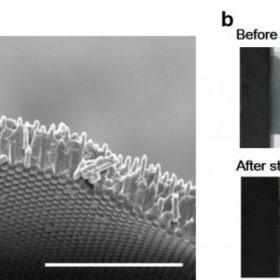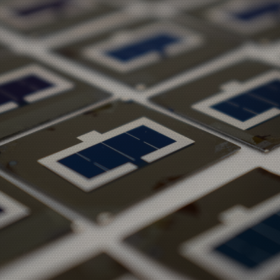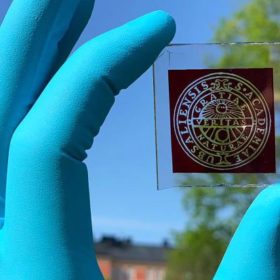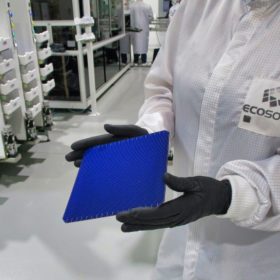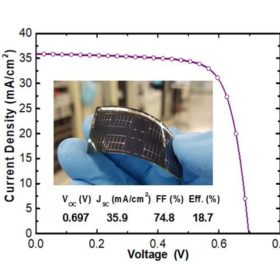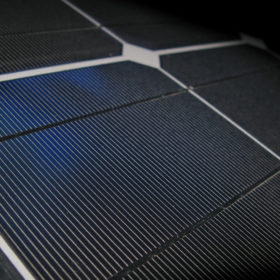Hybrid tandem quantum dot solar cell with 12.8% efficiency
South Korean scientists have produced an organic, hybrid-series tandem PV device that combines quantum dots and organic bulk heterojunction photoactive materials. They claim that the cell has the highest efficiency among all reported colloidal quantum dot cells, including single-junction devices and tandem devices.
A stretchable, transparent solar cell with 8% efficiency
Korean scientists have unveiled a colorless device made of silicon microwire composites. The enhanced light absorption of the cell, the researchers claim, is due to the re-absorption of light by the microwires, which also benefit from an enhanced electric field.
A perovksite-silicon tandem cell with 25.7% efficiency
The device exhibited a small performance loss after a 400-hour thermal stability test at 85 degrees Celsius and after the same period under maximum power point tracking at 40 degrees Celsius, according to its developer. The cell was made by combining solution-processed, micrometer-thick perovskite top cells with fully-textured silicon heterojunction bottom cells.
A 34% efficient dye-sensitized device for indoor PV
A European research team has developed a dye-sensitized PV cell based on a copper iodide complex. The device was conceived for use in self-powered and internet of things devices.
A new manufacturing process for 19.5% efficient perovskite solar cells
Researchers in China have proposed manufacturing perovskite cells using a pre-nucleation technique. Compared to traditional solvent dripping methods, the approach enables the creation of smaller crystallites in the perovskite films as uncontrolled crystallite growth affects the efficiency and durability of cells.
A commercial bifacial HJT solar cell with 24.1% efficiency
The cell is being manufactured by Switzerland-headquartered Ecosolifer with a manufacturing line provided by heterojunction specialist Meyer Burger at a 100 MW factory located in Hungary. The claimed efficiency is yet to be confirmed by an independent party.
Achieving 21.2% efficiency in a perovskite cell thanks to food additives
South Korean scientists have developed two perovskite solar cells based on a polymer made with peppermint oil and walnut aroma food additives, respectively. The new dopant‐free hole transport polymer is said to enable longer durability of the devices and to prevent lead-leakage.
Korean researchers announce flexible CIGS solar cell with 20.4% efficiency
The thin-film cell was manufactured through a low-temperature process and doping with alkali elements.
Quantum dot hybrid HTJ cell with 12.82% efficiency
South Korean researchers have developed a hybrid tandem solar cell based on quantum dots and organic bulk heterojunction (BHJ) photoactive materials. They claim that the cell could reach an efficiency rate of around 15% if they continue to reduce energy losses in the quantum dot cell and enhance near-infrared absorption.
Integrating stress and temperature sensors in crystalline silicon cells
Fraunhofer ISE researchers have integrated stress and temperature sensors within a PV module. They claim that the devices cover a very minimal part of the cells, and that their interaction with the module and the cell itself is quite limited. The sensors can be manufactured as part of a regular cell manufacturing process.

